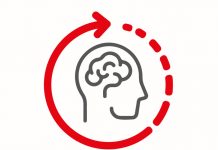The human heart is the engine room for everything you do. Every beat of that engine, which may beat up to 100,000 times per day, comes in the form of a wave. Pumping 7,500 litres (2,000 gallons) of blood in a 24-hour period, tiny electrical currents drive the waves of movement that form the beating of your heart. A small electrical shock is first produced by pacemaker cells at the top of your heart. This electrical activity travels down through the muscle, contracting and passing on the current from cell to cell. After each has fired, it becomes momentarily unable to do so again, as if exhausted and having a rest. This delay in cell excitability is called the refractory period, lasting between one-tenth and one-fifth of a second, and ensures that the electrical wave can pass only once through the muscle tissue, until the next electrical shock from the pacemaker cells starts the whole process again.
Much of my work the past 10 years has been about reminding people that they have a heart. For something that beats up to 100,000 times a day how often do we pay attention to it, or listen to it? Many adults are indeed frightened to consider it, and work it to its upper limit. Yet the heart is a muscle that needs to be maintained in good shape as like any other. It is a very useful barometer for our present state of health.
As a young athlete I was fascinated by heart zones, maximum heart rate, threshold, and post-race recovery. The most dangerous factor as an adult isn’t that we take our heart rate to its maximum beat, a fear I identify in many – rather that we exist in a perpetual middle or “gray zone” – fuelled by dopamine anticipation and stressful meetings, neither really working or truly resting that engine. We are rhythmic beings and need these opposing states or risk the perils of atrophy.
Much has yet to be discovered on the exact link between the heart and the brain, yet we are beginning to understand much more of the neurological benefits of aerobic exercise, including improved memory, learning and self-control, reduced stress, anxiety and depression, and even ‘cognitive reserve’ – essentially providing a buffer against cognitive disease including Alzheimer and Parkinson, later in life. Modern science echoes ancient thinking. The Egyptians believed the heart to be the core of all that made us uniquely human, doing all they could to preserve it during mummification, and believing the brain, in contrast, to be superfluous.
Heart measures, including Heart Rate Variability (HRV) give us valuable information on physical stress, recovery and performance, driving major decisions in sport. With more understanding on the crossover to the cognitive sphere we’re experimenting with HRV analysis in our executive programs in Barcelona to better understand mental stress, recovery, and performance. As previously reported in this column we can move towards a healthier HRV, changing our predominant nervous system, through a simple breathing exercise.
Yet a heart-based ‘epiphany’ need not require advanced tools. I’ve taken thousands of executive students up four flights of stairs at IESE Business School, from the classroom to the roof terrace overlooking the city. Being aware of when it has become difficult to maintain a conversation with a fellow participant vividly shows basic biology in action as well as present state of health.
Though few studies have made it out of the cardiology and neuroscience literature to the annual cadre of business books, there are one or two exceptions. In Spark!, John Ratey reports on the remarkable rise in academic achievement of schoolchildren in Naperville, Chicago, due to an innovative Physical Education program, finding that exam performance in the morning was significantly boosted by running the mile immediately beforehand – an intense effort that took the schoolchildrens’ heart to its maximum level. In Blink, Malcolm Gladwell, himself a lifelong athlete who continues to race the mile, talks on the optimum state of heart rate ‘arousal’ – the range in which stress improves performance.
Yet no consideration of the human heart can rest solely on the biological and neurological levels. A deeper, more emotional or perhaps spiritual consideration of who we are as human beings is necessary. Culturally, the heart represents the essence or centre of something and the means by which we give our all, truly able to inspire others. It is the seat of the things that make us human: compassion, joy, gratitude, and of course love.
I was introduced to the concept of heartfulness in recent weeks, a meditation practice focused on the heart that practitioners of mindfulness will find familiar. Mindfulness has of course enjoyed a surge of popularity within the business context in recent years with research showing the tangible benefits for our health, wellbeing and performance. I’m still understanding what heartfulness is, but see that, like the biological view of our heart as the engine of everything we do, it regards a deeper self-awareness of who we are, the importance of practice over theory, and a path towards a better and truer version of ourselves.
Whatever way you wish to view your heart – biological, neurological, emotional, or spiritual – I think the key factor is to pay more attention to it. I’m convinced that a healthier and happier you will result. And this is surely good news for business and society at large.
This months article is in celebration of Paddy Miller, who will be greatly missed.
About the Author
 Dr. Steven MacGregor is the CEO of The Leadership Academy of Barcelona [LAB] an executive education provider and management consultancy with clients including McKinsey, Telefónica and Uber. A Visiting Fellow at the Glasgow School of Art he teaches on open and custom programs at IMD, IE, IESE and CEIBS. Formerly a visiting researcher at Stanford and Carnegie-Mellon he is the author of Chief Wellbeing Officer (LID 2018) and Sustaining Executive Performance (Pearson 2015). His twitter handle is @spmacg.
Dr. Steven MacGregor is the CEO of The Leadership Academy of Barcelona [LAB] an executive education provider and management consultancy with clients including McKinsey, Telefónica and Uber. A Visiting Fellow at the Glasgow School of Art he teaches on open and custom programs at IMD, IE, IESE and CEIBS. Formerly a visiting researcher at Stanford and Carnegie-Mellon he is the author of Chief Wellbeing Officer (LID 2018) and Sustaining Executive Performance (Pearson 2015). His twitter handle is @spmacg.




































